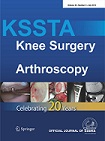
Sports Medicine
Adverse effects more frequent with bioabsorbable vs. metal screws in ACL reconstruction
This report has been verified
by one or more authors of the
original publication.
Knee Surg Sports Traumatol Arthrosc. 2014 Jan;22(1):142-53. doi: 10.1007/s00167-012-2340-8. Epub 2012 Dec 14.
This meta-analysis summarized results from eleven randomized control trials (RCTs) involving 878 randomly allocated patients to investigate the use of bioabsorbable interference screws compared to metal interference screws in single bundle primary anterior cruciate ligament (ACL) reconstruction. The study aimed to report adverse effects and clinical outcomes from different screw types after a minimum of one year postoperatively. Results revealed that the use of bioabsorbable screws applied to medial hamstring grafts demonstrated greater tunnel widening on the femoral side, and reported significantly higher rates of effusion and screw breakage with bioabsorbable screws compared to metal screws. Despite the presence of adverse effects, functional and clinical outcome measurements did not differ significantly between the two screw types.
Unlock the full article
Get unlimited access to OrthoEvidence with a free trial
Start TrialCritical appraisals of the latest, high-impact randomized controlled trials and systematic reviews in orthopaedics
Access to OrthoEvidence podcast content, including collaborations with the Journal of Bone and Joint Surgery, interviews with internationally recognized surgeons, and roundtable discussions on orthopaedic news and topics
Subscription to The Pulse, a twice-weekly evidence-based newsletter designed to help you make better clinical decisions
Exclusive access to original content articles, including in-house systematic reviews, and articles on health research methods and hot orthopaedic topics
Or continue reading this full article
Register Now

Subscribe to "The Pulse"
Evidence-Based Orthopaedics direct to your inbox.





































